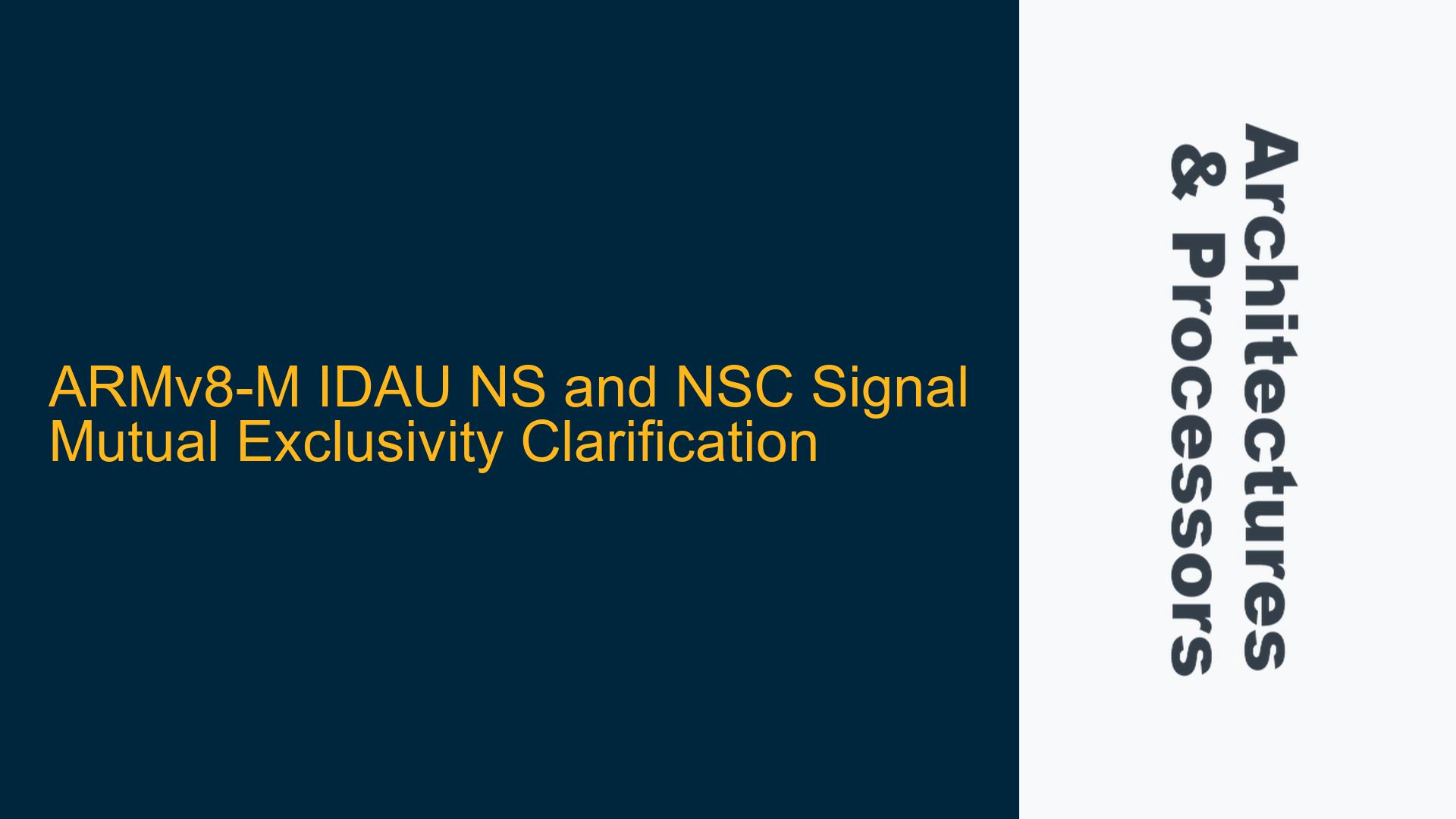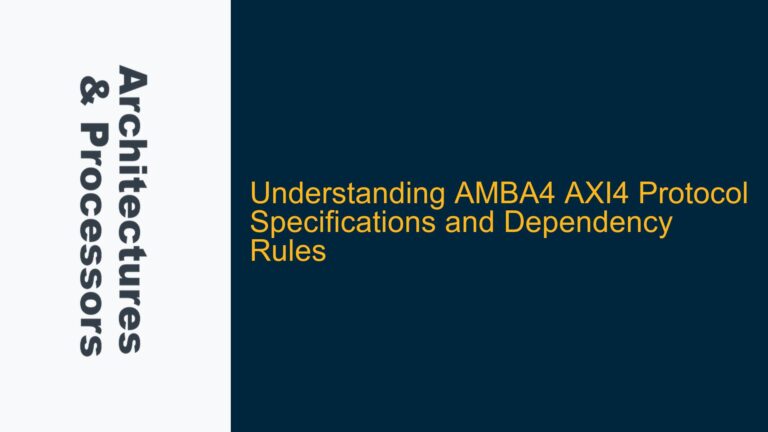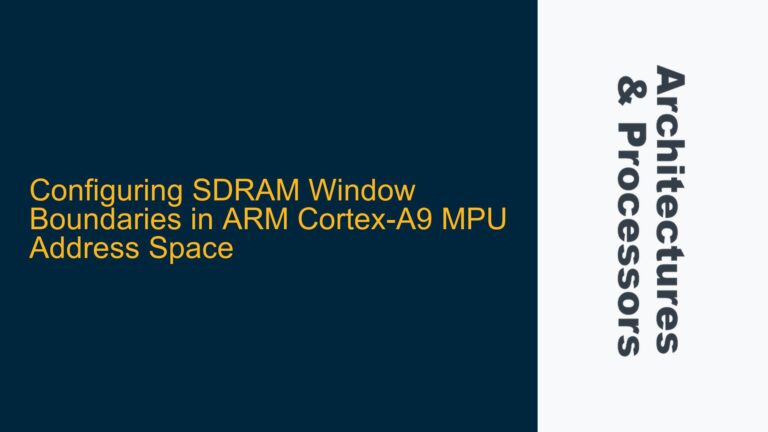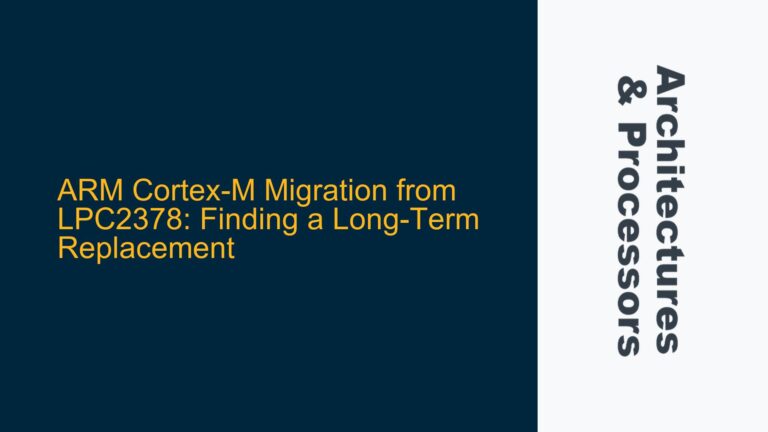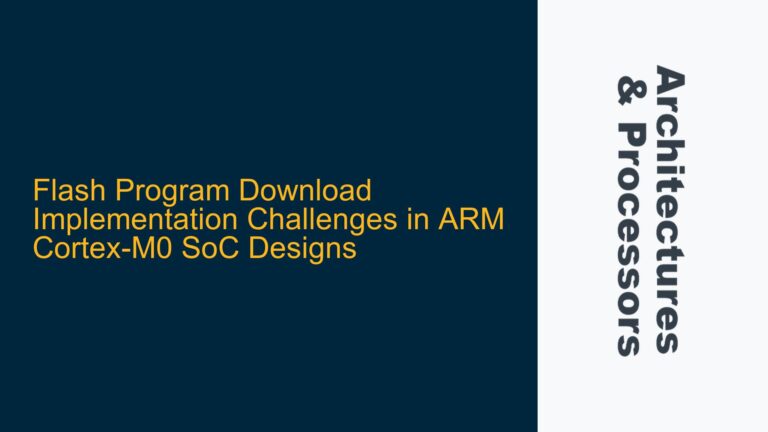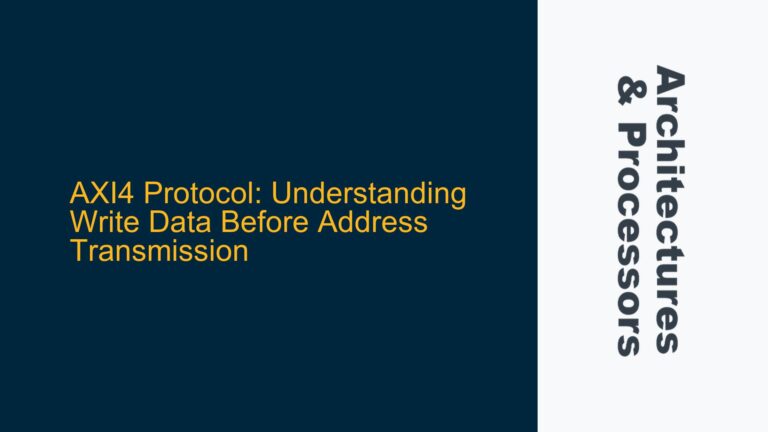ARMv8-M IDAU NS and NSC Signal Mutual Exclusivity in Memory Region Classification
The ARMv8-M architecture introduces the concept of memory region classification through the Implementation Defined Attribution Unit (IDAU). The IDAU is responsible for providing attributes to the memory system, specifically the Non-Secure (NS) and Non-Secure Callable (NSC) signals, which are used to define the security attributes of memory regions. The NS signal indicates whether a memory region is in the Non-Secure state, while the NSC signal indicates whether a Non-Secure region is callable from the Secure state. A critical question arises: Are the NS and NSC signals mutually exclusive, or can they be asserted simultaneously to represent a Non-Secure Callable region?
The ARMv8-M architecture documentation does not explicitly state whether the NS and NSC signals can be asserted together. This ambiguity can lead to confusion in system design, particularly when implementing secure and non-secure memory partitioning. The IDAU’s role is to provide these signals to the memory protection unit (MPU) and other system components, which rely on these signals to enforce security policies. Misinterpretation of the NS and NSC signal behavior can result in incorrect memory region classification, leading to potential security vulnerabilities or system malfunctions.
To understand the implications of this ambiguity, it is essential to delve into the ARMv8-M architecture’s memory protection and security model. The architecture defines three primary memory regions: Secure, Non-Secure, and Non-Secure Callable. Secure regions are accessible only from the Secure state, while Non-Secure regions are accessible from both Secure and Non-Secure states. Non-Secure Callable regions are a subset of Non-Secure regions that can be called from the Secure state, enabling secure entry points for non-secure code execution.
The IDAU’s NS and NSC signals are used to classify these memory regions. The NS signal, when asserted, indicates that the memory region is Non-Secure. The NSC signal, when asserted, indicates that the Non-Secure region is callable from the Secure state. The question of mutual exclusivity arises because the architecture does not explicitly state whether both signals can be asserted simultaneously to represent a Non-Secure Callable region.
Memory Region Classification and Signal Interpretation in ARMv8-M IDAU
The ARMv8-M architecture relies on the IDAU to provide memory region classification signals to the system. The NS and NSC signals are critical for defining the security attributes of memory regions, and their interpretation directly impacts the system’s security and functionality. The IDAU’s behavior in generating these signals must align with the architecture’s memory protection and security model to ensure correct system operation.
One possible interpretation is that the NS and NSC signals are mutually exclusive, meaning that only one signal can be asserted at a time. In this interpretation, a memory region can be either Secure (NS = 0, NSC = 0), Non-Secure (NS = 1, NSC = 0), or Non-Secure Callable (NS = 0, NSC = 1). This interpretation aligns with the architecture’s memory region classification, where a region cannot be both Non-Secure and Non-Secure Callable simultaneously.
Another interpretation is that the NS and NSC signals can be asserted simultaneously to represent a Non-Secure Callable region. In this interpretation, a memory region can be Secure (NS = 0, NSC = 0), Non-Secure (NS = 1, NSC = 0), or Non-Secure Callable (NS = 1, NSC = 1). This interpretation suggests that a Non-Secure Callable region is a subset of Non-Secure regions, where the NSC signal indicates that the region is callable from the Secure state.
The ambiguity in signal interpretation can lead to different implementations of the IDAU, resulting in inconsistent memory region classification across systems. This inconsistency can cause issues in systems that rely on precise memory region classification for security enforcement, such as systems implementing TrustZone technology. Misclassification of memory regions can lead to unauthorized access to secure memory or incorrect execution of non-secure code from the secure state.
Implementing Correct IDAU Signal Behavior for ARMv8-M Memory Protection
To ensure correct memory region classification and system security, it is essential to implement the IDAU’s NS and NSC signals in a manner consistent with the ARMv8-M architecture’s memory protection and security model. The following steps outline the process for implementing and verifying the correct behavior of the IDAU’s NS and NSC signals.
First, the system designer must define the memory region attributes based on the system’s security requirements. This involves identifying which memory regions should be Secure, Non-Secure, and Non-Secure Callable. The IDAU must be configured to generate the appropriate NS and NSC signals for each memory region based on these attributes.
Next, the system designer must implement the IDAU’s signal generation logic. If the NS and NSC signals are interpreted as mutually exclusive, the IDAU must ensure that only one signal is asserted at a time for each memory region. If the signals are interpreted as non-mutually exclusive, the IDAU must allow both signals to be asserted simultaneously for Non-Secure Callable regions.
Once the IDAU’s signal generation logic is implemented, it must be verified to ensure correct behavior. This involves testing the IDAU’s output signals for each memory region and verifying that they align with the system’s memory region classification. The verification process should include both static analysis, such as reviewing the IDAU’s configuration and signal generation logic, and dynamic analysis, such as testing the system’s behavior under different memory access scenarios.
Finally, the system designer must document the IDAU’s signal behavior and ensure that it is consistent with the ARMv8-M architecture’s memory protection and security model. This documentation should include the interpretation of the NS and NSC signals, the configuration of the IDAU, and the results of the verification process. This documentation will serve as a reference for future system design and maintenance, ensuring that the IDAU’s signal behavior remains consistent and correct.
In conclusion, the ARMv8-M architecture’s IDAU plays a critical role in memory region classification and system security. The interpretation of the NS and NSC signals must align with the architecture’s memory protection and security model to ensure correct system operation. By carefully implementing and verifying the IDAU’s signal behavior, system designers can ensure that their systems are secure and function as intended.
